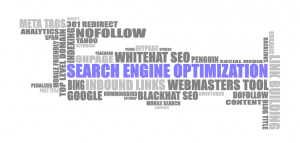 Sometimes it seems that after air, online content is the only thing that’s in unlimited supply these days. New blogs are popping up like wild mushrooms, with new content getting published every day. Do you need to churn out more content? God knows. But do you need to optimize your existing content for better search ranking? Heck, yes!
Sometimes it seems that after air, online content is the only thing that’s in unlimited supply these days. New blogs are popping up like wild mushrooms, with new content getting published every day. Do you need to churn out more content? God knows. But do you need to optimize your existing content for better search ranking? Heck, yes!
Optimizing your site pages for better visibility requires some technical knowledge of the best Phoenix SEO strategies. Let’s dive deep into that today, shall we?
Title Tags: The title of your blog post should be concise and clear. No Spam allowed! It should give the users a sneak peek into what to expect from the blog post. Also, the title of the article becomes the Title Tag of that web page. Of course, you can manually over-write the title tags, but if you’re posting new content every day, this can get really strenuous, really fast.
Instead, make sure that the article title is no more than 60 characters and includes the focus keywords. This is the quickest way to get good attention from the search engines.
Internal Linking: Including links in your articles and blog posts that direct the visitors to other pages on your site is a great way to boost user experience. Also, it helps the Google search bots to crawl your site pages and thus, index them quickly. Make sure that your anchor text is relevant to the destination link, and not spammy like good old “Click Here”.
Categories: Unless you plan to write about one and only one topic, like brown leather pants (entirely possible), you must categorize your site content for the sake of better user experience.
With a little bit of planning, you can define articles’ categories, and it will also help you write for these specific articles. As opposed to writing about every which topic that comes to your mind and then creating a new category for it. Remember, you’re not looking to leave your users frazzled with a chaotic blog experience.
Meta Description: Generally, the first 145 characters of your blog post automatically become the Meta Description, unless you manually over-write it. This description tells the users what the article is about and helps them decide if they should click-through. Consider the Meta Description the first impression of your post; keep this in mind while writing it.
Canonical tags: Your blog posts should include self-referencing tags that help with the canonicalization of the content. Confused? It’s like telling Google (or other search engines) that you want to take the credit for the content that’s been tagged. You should do this especially of the post contains totally unique and fresh content.
But if the content is not unique, in fact duplicate, simply choose one main site page as the ‘canonical’ version and point all the other pages with similar content to that main page with canonical tags. This way you’re asking for credit for only the main page.
Archives: Archives serve two very useful purposes; they help the users find old articles while browsing for the useful content, and they help the search bots crawl your site pages with ease. It’s a good idea to archive your blog posts by month and year so that the users can skim the posts in a chronological order, if needed.
From the SEO standpoint, we cannot stress this enough – the easier you make it for the search bots to crawl and index your site pages, the better your search ranking is going to be.
Contact NEXTFLY today for your next SEO or website design project!

